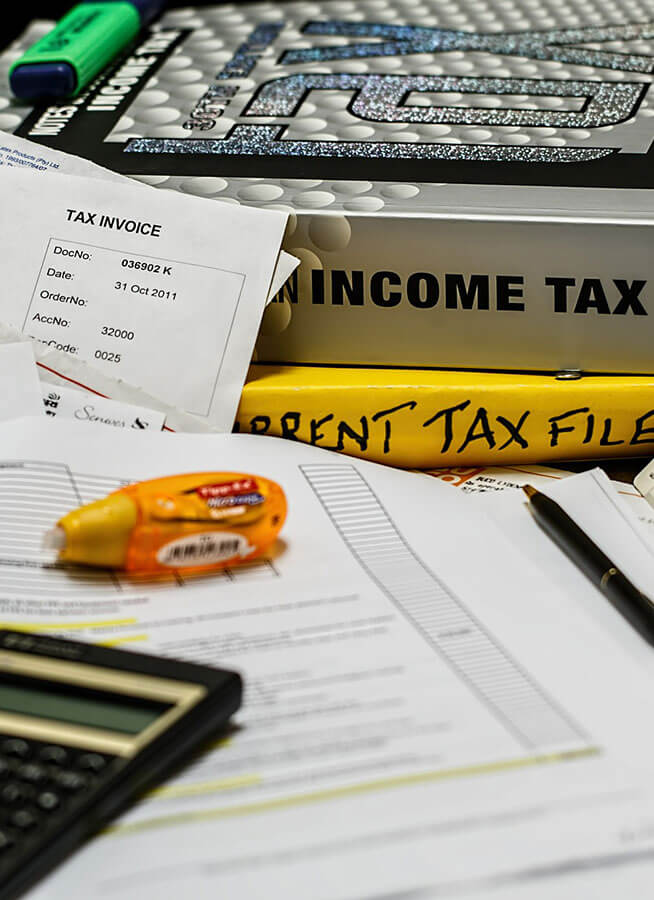Tax Implications of Rental Income: Passive Rent, Business Rent, and Overseas Rent
This article discusses taxation on residential rental income in Israel. For information on taxation of rental properties abroad, please refer to our International Real Estate Taxation page. Although taxation on rental income is relatively straightforward, a precise understanding of all legal provisions, regulations, and execution directions is required to achieve minimum taxation.
Our firm has extensive experience advising on income from property rentals in Israel. We provide guidance and support in managing voluntary disclosure processes for income from residential rental properties and calculating available tax reliefs. As well, we offer opinions on whether income is considered as active or passive.
Residential Rental Tracks in Israel
Several options exist for taxing residential rental. The following tracks apply to rental income not classified as a business income.
- Tax exemption track under the Income Tax Law (exemption from tax on residential rental income), Tax Amendment Year 1990. If all rental properties are exclusively designated for residential use, as clearly stated in the rental agreements, and are neither registered nor required to be recorded in the owner’s business accounts, the rental income will be tax-exempt, provided the total monthly income does not exceed the annually updated exemption threshold. The updated exemption ceiling for 2022 is 5196 NIS. Any rental income (for residential use!) below this ceiling is not required to be taxed or to be reported to the tax authority. The ceiling increased from 5070 NIS in 2021 from 5100 NIS in 2020 and is updated annually. It’s important to note that the exemption is calculated monthly, and so, if the income exceeds the ceiling in any given month, it is mandatory to submit the tax report and pay the income tax on the specific month(s) of rental income.
- Partial tax exemption track under the Income Tax Law (exemption from tax on residential rental income), Tax Amendment Year 1990. If the total rental income exceeds the exemption ceiling from the first track but is less than double the ceiling, the partial exemption track may be applied.
The calculation for the partial income track:
It’s important to note that the first tax bracket is 31% for passive income from rental payments, except for landlords who reached age sixty during the tax year. For these landlords the first tax bracket is 10%. Ongoing expenses, such as repairs, and attorney fees related to the rent, may be deducted from the rental income proportionately between the taxable amount and the full rental payments. Under the partial exemption track, a depreciation rate of 2% of the purchase cost of the rented structure, excluding the land value, is not deductible. (That is, 2% of 2/3 of the property’s value) according to the “Income Tax Regulations (Depreciation Rate for Residential Rental Property), 1989.”
To calculate; first, this exemption limit amount is subtracted from the total rental income. The difference is then subtracted from the exemption limit, and the resulting amount becomes the exempt amount. The exempt income calculated is then subtracted from the rental income, resulting in the taxable income. This taxable income is subject to marginal tax according to the applicable tax bracket.
- Tax brackets track-marginal tax. The tax rate on rental income will correspond to the landlord’s marginal tax rate for all income sources and will not be less than 31%. An exception is made for landlords over age 60. In this track, complete deduction of all expenses associated with the rental and depreciation on the property is allowed.
- 10% tax rate track according to Section 122(a) of the Income Tax Ordinance. Under this track, a reduced tax rate of 10% may be applied for income from renting out a residential property in Israel. However, this is on the condition that the property is used solely for residential purposes and not business. Although this track offers a lower tax rate compared to the marginal tax rate, it does not allow for the deduction of expenses or depreciation. Therefore, this track is only preferable when there are minimal expenses and the marginal tax rate is high. The tax must be paid no later than 30 days after the end of the tax year in which the rental income was received, otherwise interest and linkage will be added. The tax can be paid using the form; “Request for Payment of Tax on Income from Residential Rental.”
Tax on Rental Income-Combining Tax Tracks
Selecting a separate tax track for each rental property is allowed (for example: using the partial exemption track for one property and the 10% tax rate track for another). However, the full tax exemption case cannot be selected for a single property. Our experience indicates that, in many cases, choosing a separate track for each property (a legally permitted one) can lead to significant tax savings.
It is also essential to consider the issue of National Insurance contributions on rental income.
Choosing between reporting tracks and tax payment options involves various additional considerations. For example, implications from National Insurance, health status (i.e. disability), pensions, etc. It is recommended to schedule a consultation with a tax expert for professional assistance in making these decisions.
Withholding Tax Income
Withholding tax is a prepayment of tax deducted by the payer (e.g., a tenant) from the taxpayer’s income before transferring the remaining amount to the taxpayer. When a tenant pays rent for property used to generate income, such as a store or apartment, the tenant must withhold tax at a rate of 35%. If the landlord provides special confirmation of having an exemption for a different rate, the withholding rate will be adjusted accordingly. This requirement is based on the Income Tax Regulations (Withholding from Rental Payments), 1998.
The tenant must note the total payment, withholding rate, amount at the source, and net payment amount on a paystub or check. The tenant may recognize the rental payment as an expense only if tax was withheld.
In the case that an individual works from the property, but its primary use is residential, it is possible to argue that withholding tax does not apply for most of the rental payment. When the landlord is not registered for VAT, the tenant must issue a self-invoice for the rental payment. The tenant is then obligated to open a withholding tax file and report the rental payment and withheld tax.
Impact of Rental Income Classification on Capital Gain Tax Exemption
Capital gains tax exemptions under Section 49 of the Real Estate Taxation Law, including the single apartment exemption, apply to a residential apartment classified as a “qualified residential apartment.”
One of the conditions for classifying an apartment as such, is predominantly residential use 80% at the time, or the four years preceding the sale. Accordingly, if the apartment is rented for business purposes, resulting in the majority of its use being non-residential, the exemption will not apply. The question is, what happens in cases where the apartment was partially used for resident and partially as an office? The answer is that, if less than 50% of the area was used for office purposes, then the apartment will qualify for the exemption.









